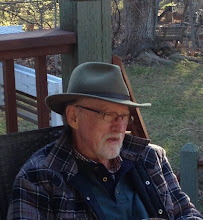We’re there on the Memorial Day weekend, when even some of the thousands of churches in Utah are flying flags, and it seems altogether appropriate that we should be climbing towards the high point of the road, a pass called “Soldier Summit”.

And this “Blue Star” highway is part of a patriotic movement, rather than a mere local curiosity:
The Blue Star Memorial Marker Program of the National Garden Clubs, Inc. began in 1945 to honor the men and women serving in the Armed Forces during World War II. The name was chosen for the star on flags displayed in homes and businesses denoting a family member serving. Garden clubs pictured a ribbon of living memorial plantings traversing every state. The designation of Blue Star Highways was achieved through petitions to the state legislatures and cooperation with the Departments of Transportation. A uniform marker was designed to identify the Highways.
The Blue Star Memorial Program grew to extend thousands of miles across continental U.S., Alaska, and Hawaii. All men and women who have served, are serving, or will serve in the Armed Forces of the United States are included.
----------
The next day, which is the last day of the Memorial Day weekend, we arrive at the KOA in Romeroville, New Mexico. They have a special on: veterans get a reduction. The lady knows we’re from Canada, but doesn’t hold that against us: am I by any chance a veteran?
I joke, “I don’t suppose being a retired reserve naval officer in Her Majesty’s Canadian Forces counts?”
But it does, and she thanks me for my service, before showing us to our site, driving her quad with the McCain/Palin poster on the back.
----------
Fort Sumner, New Mexico, is an unprepossessing small town, which features a couple of gas stations and, thanks to the Pecos River, the only trees or greenery for miles.

Take that, Port McNeill, home town of Willie Mitchell!

